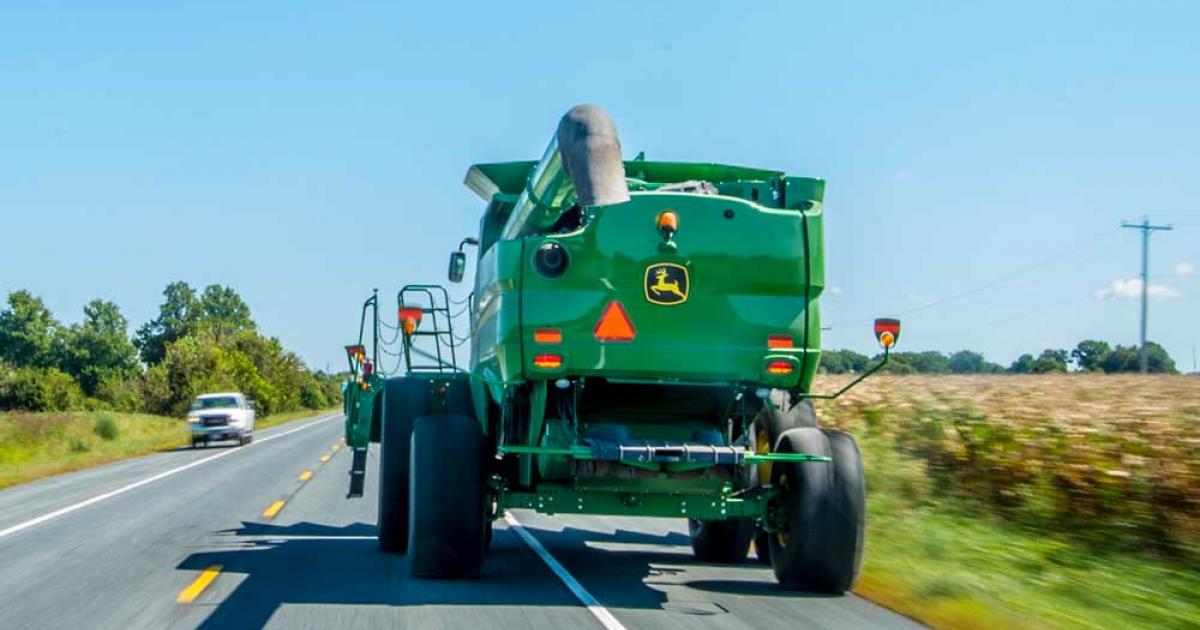Autumn means trees turning color, football games, tailgates and apple cider. This is the farmers' way to harvest. During the road you might encounter farm equipment such as a tractor that pulls an instrument. It was used by road operators to move between farms. The farm equipment may extend beyond a lane or in some cases extend beyond the road, but travel at slow speeds, typically 10-15 mph. If you come across large, slow moving farm equipment or gear, stop and wait.
Stay Informed
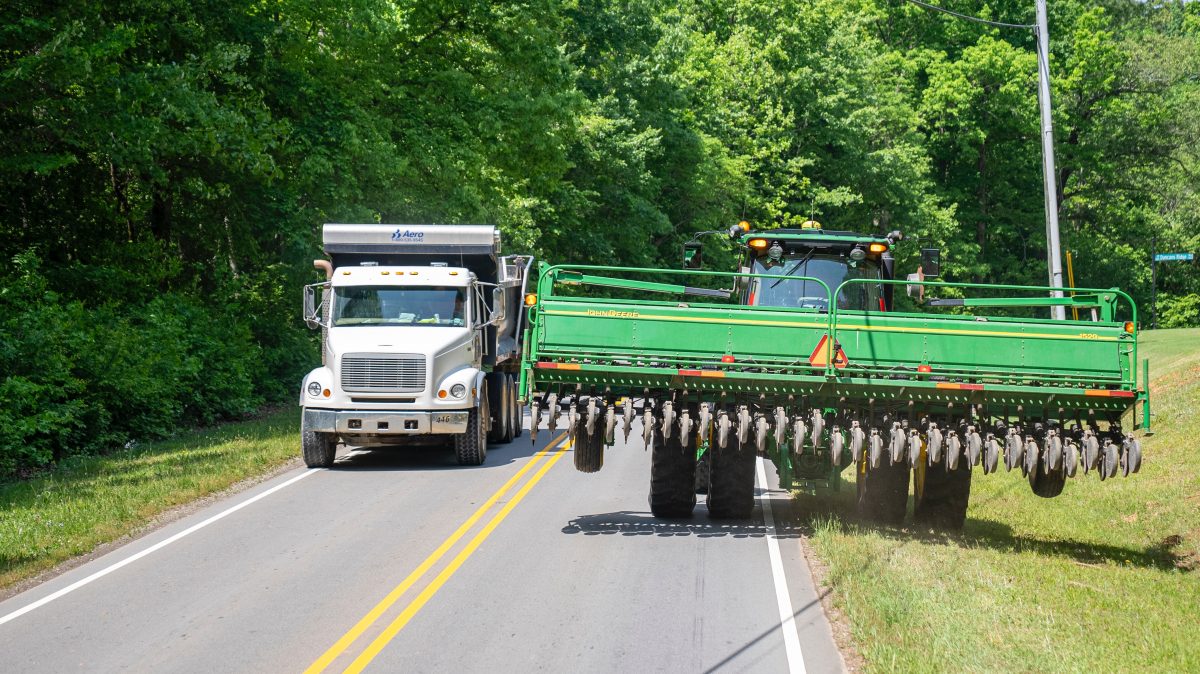
Before venturing out on rural roads, especially during the harvest season, it's a good idea to stay informed about local farming activities.
Understanding the Local Farming Calendar
To navigate rural roads safely during the harvest season, it's crucial to develop an understanding of the local farming calendar. Agricultural communities operate on a schedule closely tied to the changing seasons. This means that the timing of planting, nurturing, and harvesting crops is not arbitrary but meticulously planned to optimize yields and ensure the abundance of our food supply. By keeping yourself informed about the farming activities in your area, you can align your travel plans with the agricultural ebb and flow
Local News Sources as Your First Stop
Start by turning to local news sources as your primary information hub. Local newspapers, television stations, and radio broadcasts often cover agricultural news, including updates on the progress of the harvest season. They might feature interviews with farmers, provide forecasts for when specific crops will be ready for harvesting, and even report on any potential traffic disruptions due to farm equipment on the road. Tuning in to these sources will give you an overview of the timing and areas that are likely to be affected.
Farm Bureaus: The Agricultural Expertise Hub
Farm bureaus are valuable resources for gathering information on farming activities in your region. These organizations are typically deeply rooted in the local agricultural community, and they can provide insights into agricultural equipment that go beyond what mainstream media might offer. Contacting your local farm bureau or checking their website can yield precise data about which crops are currently being harvested and where. They might also share details on community events related to agriculture, such as farmer's markets, which can help you plan your visits more effectively.
Online Resources for Real-Time Updates
In the digital age, online resources have become indispensable for staying informed about local farming activities. Many agricultural communities have websites, social media pages, or forums dedicated to sharing real-time updates on the progress of the harvest season. These platforms often provide detailed maps, photos, and even live video feeds of harvesters and tractors in action. Monitoring these online resources can help you plan your route and adjust your schedule to avoid peak farming equipment traffic.
Planning Your Travels and Avoiding Surprises
The information you gather from these sources will enable you to plan your travels strategically. You can choose routes that are less likely to encounter harvesters during peak working hours or even coordinate your trips with the daily schedules of local farmers. Avoiding surprises on the road is not just about safety; it's also about efficiency. With knowledge of the local farming calendar, you can make the most of your time and minimize potential delays caused by slow-moving farm machinery out on the road.
In essence, staying informed about local farming activities is not just a matter of road safety but a way to connect with the agricultural heartbeat of your community. It allows you to appreciate the hard work that goes into putting food on our tables and, in doing so, fosters a sense of respect and understanding for the farming community. So, before you venture onto rural roads during the harvest season, be sure to tap into these sources of knowledge, helping you become a considerate and well-informed traveler in your community.
Be Patient
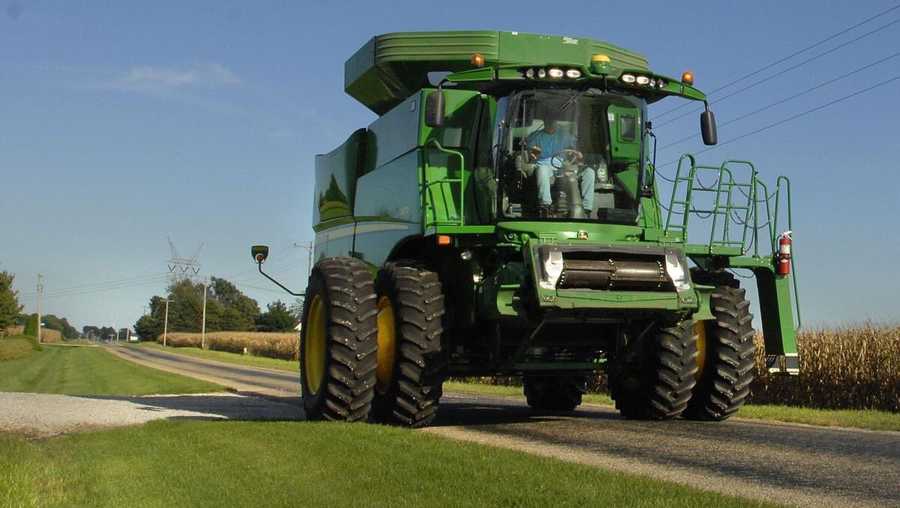
One of the key virtues when sharing the road with farming harvesters is patience. These machines are often slow-moving, and it can take time for them to maneuver and make way for other vehicles. Instead of rushing or attempting risky or illegal maneuvers to pass, be patient and wait for a safe opportunity to overtake the harvester.
Maintain a Safe Distance
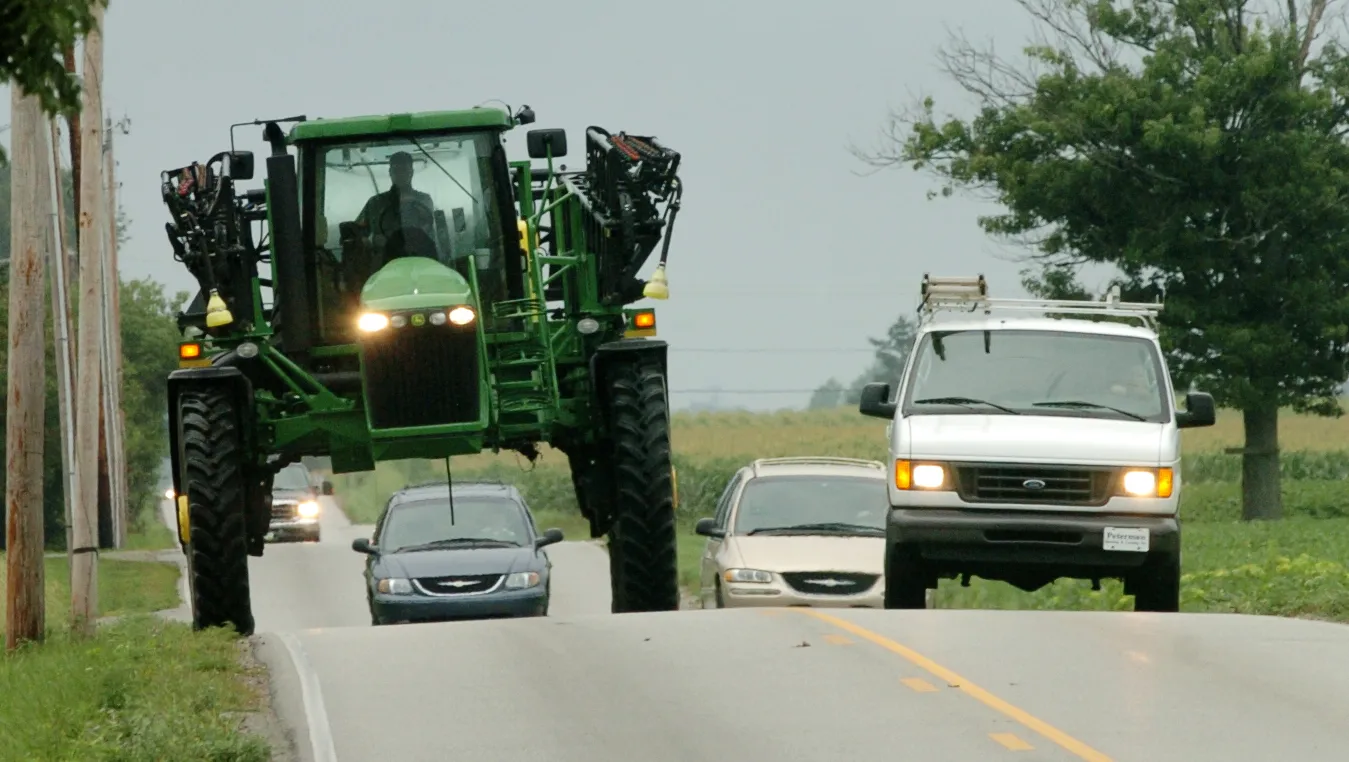
When driving behind a farming harvester, make sure to maintain a safe following distance. Harvesters can sometimes emit dust or debris, and it's essential for drivers to keep a comfortable distance to avoid any potential hazards. Additionally, this allows the farmer to see your vehicle in their mirrors and make way for you when possible.
Use Passing Zones Wisely
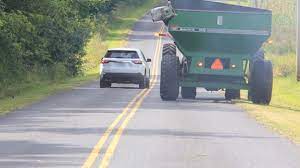
On rural roads, there might not be as many opportunities for overtaking slow-moving farm vehicles, as there are on highways. When you do find a passing zone or a designated passing lane, use it wisely. Ensure that you have clear visibility and enough space to overtake the harvester safely. Avoid passing on curves, hills, or other blind spots.
Communicate with Hand Signals

Farmers operating harvesters might not always have the best visibility of left side of the road behind them. To let them know that you'd like to pass, use hand signals or turn signals to indicate your intention. This helps the farmer understand your intentions and may prompt them to make way when it's safe.
Respect Farm Equipment Dimensions
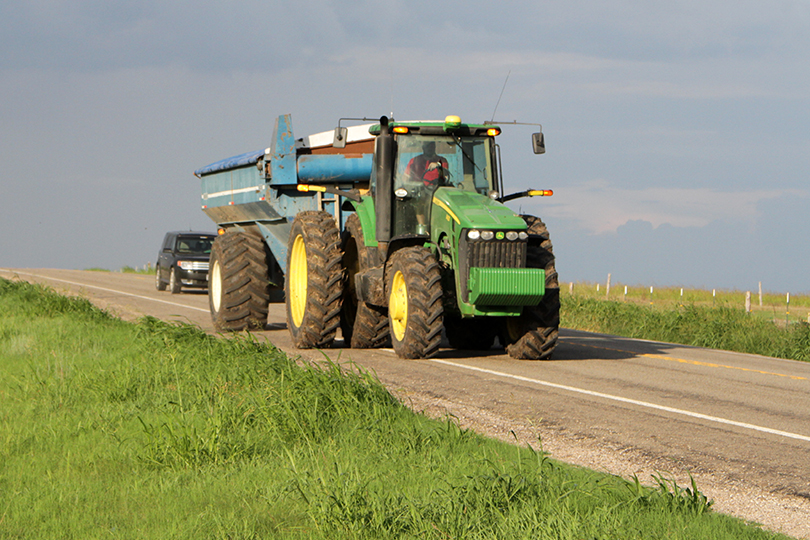
Farming harvesters are typically wider than a standard vehicle. Be aware of their dimensions, and remember that some road sections may not be wide enough for both the harvester and your vehicle. If you encounter a farm vehicle in a narrow passage, stop and allow the harvester to pass first. Always give them right of way in these situations.
Expect Sudden Stops
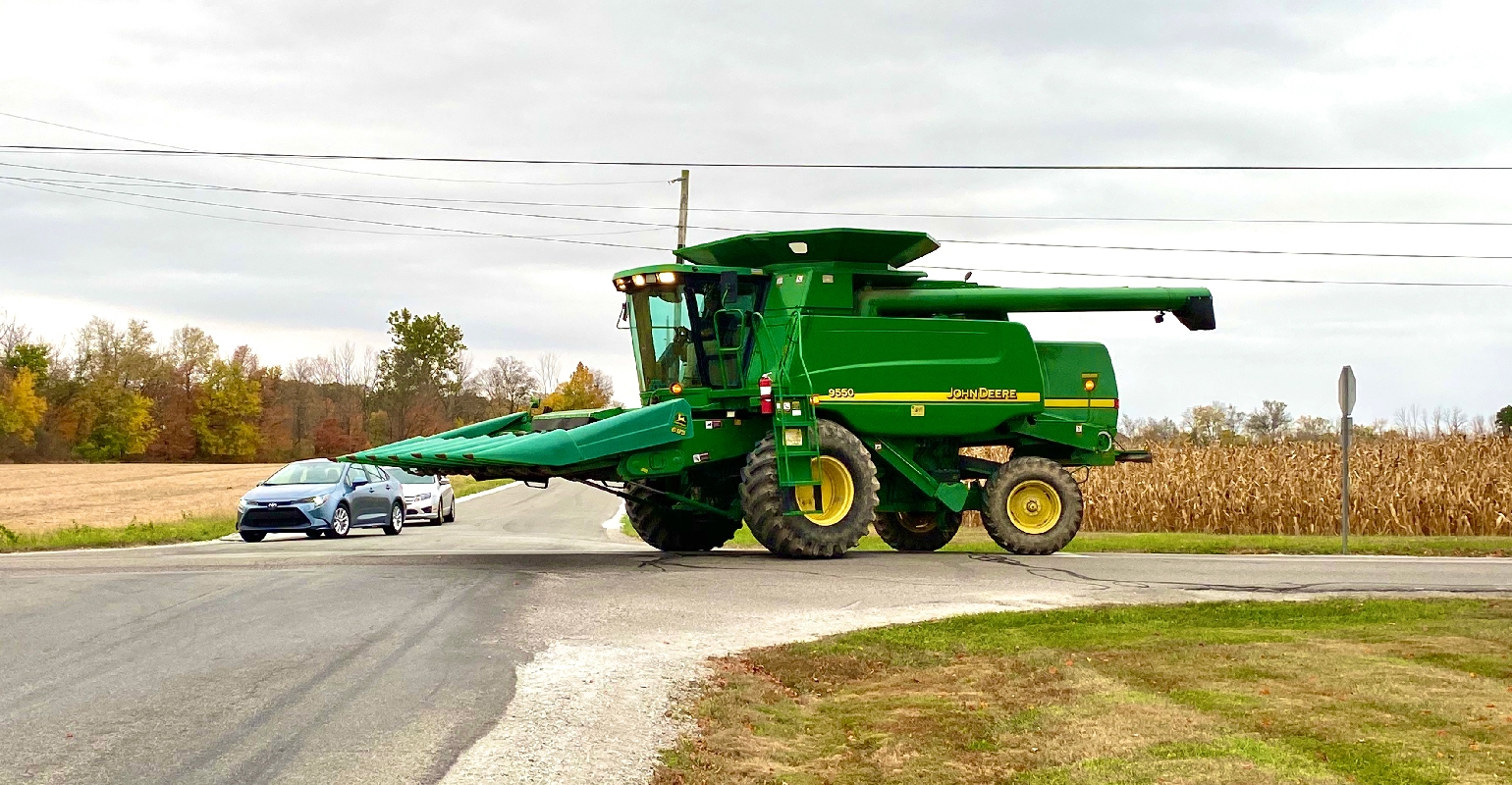
Farmers might need to make sudden stops for various reasons, such as adjusting equipment load up, checking for problems, or avoiding obstacles on the road. Be prepared for this possibility and leave plenty of space between your vehicle and the harvester to react safely to unexpected stops.
Equipment Adjustments and Maintenance
One common reason for a sudden stop by a farming harvester is the need for equipment adjustments or maintenance. These massive machines are often intricate and complex, with various components that require continuous monitoring and calibration. Sometimes, a farmer might need to pause the harvester to fine-tune settings, address minor issues, or ensure the agricultural machinery itself is operating at peak efficiency. In such cases, they must stop the harvester, which can create a momentary roadblock.
Unforeseen Obstacles on the Road
The rural roads on which farming harvesters operate can be rife with surprises. From fallen branches to unexpected ditches and potholes, the road is filled with potential obstacles that can necessitate a sudden stop by the farmer. Additionally, wildlife, such as deer or other animals, can unexpectedly dart onto the road, prompting a swift halt to avoid collisions. Being prepared for these eventualities and understanding that they are inherent to rural road and does farm equipment have the right of way of travel is essential.
Reacting to Sudden Stops
As a responsible driver sharing the road with farming equipment transport and harvesters, it is imperative to maintain a safe following distance to allow for the unexpected. This distance should be generous enough to provide ample reaction time when the harvester suddenly stops. By keeping a respectful distance, you create a buffer zone that allows you to react safely when the harvester comes to a halt. A common rule of thumb is to stay at least two car lengths behind the harvester, or more if the road conditions and visibility warrant it.
The Importance of Defensive Driving
Defensive driving practices are invaluable in these situations. Keep your attention focused on the road ahead and the movements of the harvester. Anticipate the possibility of sudden stops and avoid tailgating, which can lead to rear-end collisions. Instead, maintain a patient and cautious approach, allowing for any abrupt changes in the harvester slow moving vehicle's speed.
Patience in Rural Road Travel
Patience is paramount when sharing the road with farming harvesters. Understanding that farmers may need to make sudden stops for various reasons and preparing for these situations can lead to safer and more harmonious travel on rural roads during the harvest season. By leaving plenty of space between your vehicle and the harvester, you contribute to the well-being and safety of everyone on the road. Ultimately, this approach ensures that rural road travel remains a cooperative and respectful endeavor, benefitting both farmers and fellow road users.
Reduce Speed in Dusty Conditions
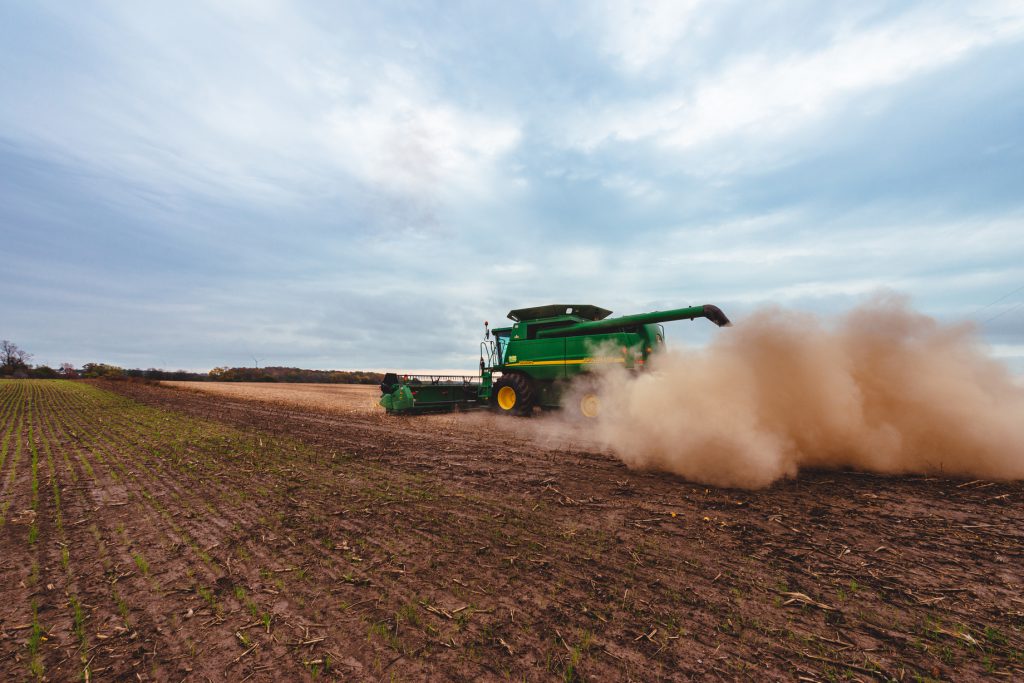
Harvesters can create dust clouds that significantly reduce visibility on the road. When driving through areas with reduced visibility due to dust, slow down and use your headlights, even during the daytime. This will help you see and be seen by others on the road.
Sharing the road with farming harvesters requires patience, caution, and a spirit of cooperation. By following these tips and being considerate of the unique challenges faced by farmers during the harvest season, we can ensure safer roads for everyone. Remember that rural roads provide vital connections for our food supply, and it's crucial that we all do our part to ensure a smooth and safe coexistence of public roads with the farming community during this busy time of year.



